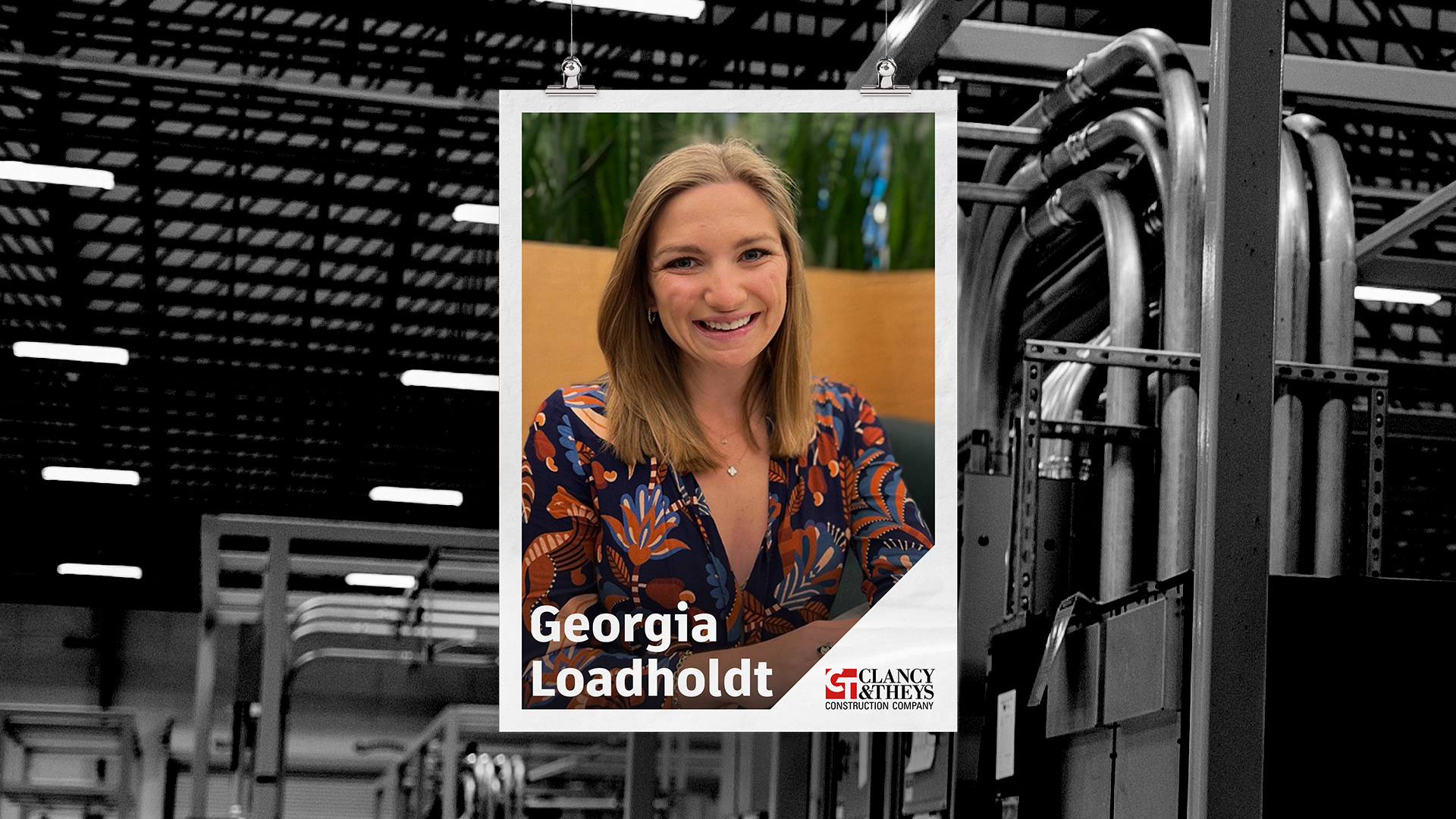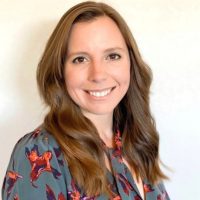Help us improve your experience. See content that is made for you!
See how IBM increased their efficiency by up to 30%!

Help us improve your experience. See content that is made for you!
See how IBM increased their efficiency by up to 30%!


Adopting new technologies and digitizing workflows can be challenging, especially for organizations with multiple teams, offices, and divisions. Digital transformation comes with tasks like getting buy-in, evaluating solutions, and gathering data—all while keeping several stakeholders in the loop.
It's a lot of work, but the effort is totally worth it. And if you need inspiration on how to do it, you'll love our latest Behind the Build feature.
Meet Georgia Loadholt, Operations Analyst at Clancy & Theys Construction Company. Georgia has been at the company for a little over a year, and she's already made a tremendous impact by facilitating the rollout of Autodesk Construction Cloud from start to finish.
We caught up with Georgia and asked her to discuss her experience leading the initiative and the lessons she learned from the process.
Clancy & Theys is a privately held general contractor and construction manager headquartered in Raleigh, North Carolina. We have six offices across the southeast from Virginia to Florida. We cover a wide range of project types, from public projects such as K-12 and higher education to large mixed-use developments to life and health sciences to houses of worship. We are excited to be celebrating our 75th anniversary this year!
In 2021 I graduated from Clemson University with a Bachelor’s degree in Financial Management. I have always had a love for numbers and problem-solving.
During my junior and senior years at Clemson, I gained exposure and experience in the construction industry. I was attracted to the dynamics and competitiveness the industry had to offer. So, I stayed another year at Clemson University to pursue a Masters in Construction Science and Management.
During my time in graduate school, I worked as a graduate research assistant, where I started to interact with data specific to the construction industry. That pulled back my love for numbers and problem-solving, and I enjoyed finding answers to research questions from data. I saw the value that data could provide in answering questions.
I have been with Clancy & Theys for a little over a year. During this time, I have had the opportunity to gather insight into the company's operations from multiple perspectives.
My first responsibility at Clancy & Theys was to lead the Project Management Software search committee. This committee consisted of roughly thirty colleagues representing all five (at the time) division offices and speaking for various roles that would interact with the project management software.
I defined my role as a quarterback during this six-month process; I organized the process and communication while entrusting committee members to make the decisions. I also ensured committee members had access to all the resources they needed to succeed.
Thanks to the search committee, this process was a success. At the end of the six months, we selected Autodesk Construction Cloud, which was the project management software best suited for Clancy & Theys.
There are so many project management software that are out there, and all of them with unique features and capabilities. You have to pick the one that's best for your company, which can be a tough decision.
What I am most proud of was the team I worked with during this process. While this was my full-time job for about eight months, the rest of the committee members were project managers, accountants, estimators, and VDC. They were balancing this initiative with their full-time job. The commitment you see from your teammates makes being a Clancy & Theys employee that much more rewarding.
Lastly, I'm proud of the transparency we showed the company when making this decision. A large part of gaining buy-in is being transparent with why we made the decision and why Autodesk Construction Cloud is the best product for us.
Challenges can have a negative connotation, but I am fortunate to work in a job that provides them because each time I overcome a challenge, I grow personally and professionally.
One of the biggest challenges I am currently facing is the adoption of new technology and new processes. This is the first time Clancy & Theys has operated using a cloud-based project management solution from project start to finish, from preconstruction all the way through to construction project closeout. This transition challenges the company to rethink processes and question current standard operating procedures.
There are a lot of processes we did because we never had a cloud-based management solution, and now that we have Autodesk Construction Cloud, it allows us to refine our processes and evolve them to adapt to emerging technologies.
Sometimes, it can be a challenge to gain buy-in from colleagues. Not only are we adapting to this new technology, but we are also going to change our processes. The good news is we have a great leadership team here at Clancy & Theys. We are fortunate to have an Executive leadership team who is very supportive of this initiative and our employees get to see this support firsthand.
The platform has so many unique features and capabilities that every team member is excited about the different functions of the software. As they should be, there is a lot of value Autodesk is going to add to their day-to-day responsibilities.
However, across the board, recently, I have heard a lot of colleagues get excited about this idea of one platform for all project information from “cradle to crave.” Autodesk Construction Cloud provides a location to store all project data. Having a one-stop shop for us, the owners, our trade partners, and all of our project stakeholders is exciting because it streamlines communication, creates easy access to information, and allows that one central place to collect data.
Autodesk Construction Cloud provides accountability and transparency for our team, along with external stakeholders, including owners and trade partners. It invites all project stakeholders to collaborate, coordinate on a single platform, build connections, and increase project visibility. Thus, driving more predictability and confidence.
The platform serves as the single source of truth for project data and can be accessed by all project stakeholders. With easy access to our data, we can begin turning the data into actionable insights. This gives the team more confidence when making decisions.
It is a partnership at its core. We spent six months in the evaluation period, so we did not take this lightly. We were looking for the best solution for Clancy & Theys, which meant a partnership between us and the software provider. We knew we had a partnership with Autodesk.
We frequently engage in conversations with Autodesk on how they can help us improve operations and provide feedback on how they can improve their product. This kind of partnership was a big deal for us.
Autodesk continues to put a lot of time, money, and energy into research and development and continues to develop its current product line. As we grew into a bigger company, we saw that Autodesk was best suited to grow with us. As we take on bigger and more complicated projects, we felt Autodesk could help support and set up those projects to be successful.
To me, the future is data analytics. At its core, data analytics is about three things: people, processes, and technology. This is always an ongoing evaluation because all three of these key points are evolving daily.
Right now, at Clancy & Theys, we have our technology thanks to Autodesk, and we are using this technology to refine our processes and standardize across all divisions.
When it comes to processes, we are refining current processes to collect data that is accurate, consistent, and reliable.
Lastly, we are training our people on how to collect and interpret data. Well-trained employees are more likely to engage with technology and processes and be satisfied when doing so.
By using our data, our company engages in proactive rather than responsive decision-making. Data-backed decisions lead to better project outcomes, including cost and time savings.
If you want to succeed, get comfortable asking questions. It shows that you are invested in your work and eager to learn more. No one knows everything, so asking questions allows for diversity of thought and the opportunity to broaden and deepen your knowledge base.

May we collect and use your data?
Learn more about the Third Party Services we use and our Privacy Statement.May we collect and use your data to tailor your experience?
Explore the benefits of a customized experience by managing your privacy settings for this site or visit our Privacy Statement to learn more about your options.